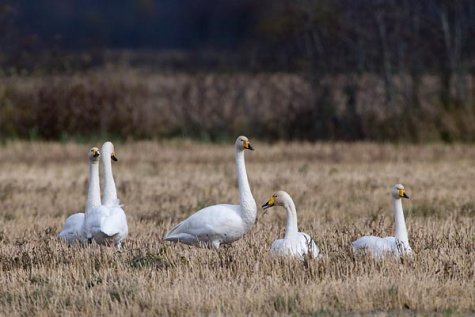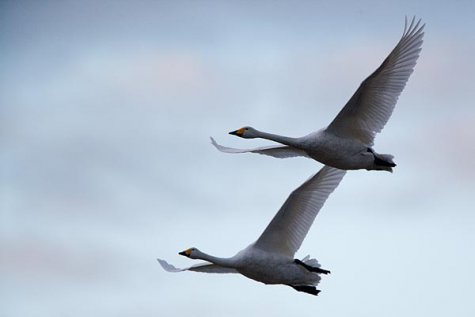Some whooper swans have not left Estonia yet
Photos Arne Ader
Translation Liis
Whooper swans and Bewick’s swans. Matsalu
Whooper swan Laululuik Cygnus cygnus
Until now swans have been in no hurry to go anywhere; they feed on fields or coastal pastures. A splendid view: the magnificent birds in the puddles that have formed in fields in recent weeks, around them a green grey-flecked ground, as backdrop reddish birch thickets – in ordinary years this is not a Christmas-time description. When the storm has passed we will see more passing migrants from southern Finland – there too the ground is still black.
The number of passing migrating swans in autumn can be estimated at about ten thousand birds. The large powerful birds have no enemies in nature, white-tailed eagles sometimes harass them, checking if there are any old or very young bird or some individuals injured on migration. A part of them will certainly stay in the sea bays for winter.
Externally they are the size of mute swans, with a straight neck and slim lines. The base of the beak of adult birds is broadly yellow, the tip black. The beak base of juveniles is pinkish and the plumage brownish-grey.
Whooper swans










